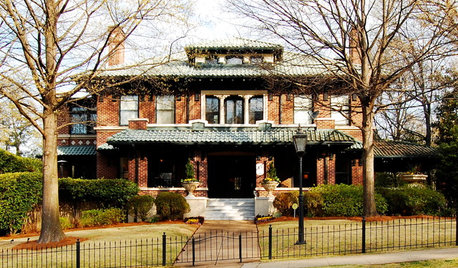Southeastern U.S.A. chilling accumulation estimation
Hi
I found on internet 1 chilling accumalation estimate for Southeastern U.S.A. which is perhaps not well known here or not as widely recognized as 2 others chilling requirement calculations. First i thought it was calculation, but now i see it is estimation, so i let it then be so and call it estimation.
Here is those 2 methods written quickly.
1. 1 Chill unit is 1 hour between 32 Fahrehheit degrees and 45 Fahnrenhiet degrees. So using this method your chill units is just accumulation of hours between those temperatures ranges, with possible limits on dates also (I meant starting on some date and ending some date and chill hours between those days and calculating same way.).
2. Utah model is another way to calculate chill units. This method takes account of high temperatures, which may reduce already accumulated chill units and as well give partial chilling when temperature are under/over optimal temperature. I just said optimal, i don't mean it is optimal in exactly, but 1 hour in optimal temperature give 1 chill unit in that temperature. You can perhaps find using google exactly numbers to calculate Utah model.
Now to that estimation method. Above 2 methods need hourly weather data to calculate chilling accumulation. Southeastern Peach Grower's Handbook says it is quite good way as follows : "
Altought Utah model is probably closer to measuring the real effects of temperature on peach buds, it needs modification to predict bloom in the southeast".
That was it. This 3rd method try to better way measure chilling accumalation for Southeast U.S.A. I read this method from Southeastern Peach Grower's Handbook from University of Georgia. Additionally Texas A # M university says also "it has demonstrated to be accurate for estimating chill accumulation in Texas from the Lower Rio De Grande Valley up to the Red River and should work well throughout the southeastern U.S."
Yes it says estimation. Not any mention of California, U.S.A. i see. Does this work there too? I think Texas, U.S.A. is not considered usually as southeastern U.S.A, instead as southern U.S.A. So perhaps it is possible...
3. This method estimation is using following formula :
Seasonal chill hours = 100 * (18,5 C - T)
18,5 C means 18,5 Celsius degrees and T is temperature. T is coldest month average temperature. It is suggested to be janury in Georgia (I see from Southeastern Peach Grower's Handbook), but it can be other month as well, so if you think coldest month is december, then take that month average temperature. And average temperature was counted this way day high temperature + low temperature / 2. This was monthly average temperature so you need do that for every day of month and take average of those results (If you do this calculation yourself). Remember we need coldest month average temperature in Celsius degrees, so if you have Fahrenheit degrees, you need to convert those to Celsius degrees.
Next you think where you get your monthly average temperature data? Here is 3 resource where you can find it.
1.www.wunderground.com if you get Fahrenheit degrees as a default grade, you can change temperature readings to Celsius degrees in upper right corner under link Page Preferences, choose there metric and update page. Just one note on many places Wunderground gets hourly data and it counts average using normal average formula, not the one above. Normal i meant if you have 4 readings it is sum of 4 and divide it for 4. This may make small discrepancy compared to the above formula, i would say maximum about 0,5 Celsius for 1 day - at the worst i think (That is just mine quick feeling - not scientific or verified thing, if you are worried about it you can count both way and see what the discrepancy would be).
2. http://www7.ncdc.noaa.gov/CDO/cdoselect.cmd?datasetabbv=GSOD&countryabbv=&georegionabbv= use global summary of the day, i have previosly described this already quite a bit, there you have daily high and low temperature and average temperature available, which you can use. But remember temperatures are in Fahrenheit degrees, so you need to convert it again.
3. Use NOWdata this might be one of useful way to get that data. To start getting the data go to the www.weather.gov , then click from left frame Local link. Now you see list of headquarters (Where is NOAA offices located). Now let's look at Charlotte, North Carolina, U.S.A. data. Let's choose Greenville/Spartanburg in South Carolina section. Yes Charlotte is actually in North Carolina, but in this place it is under South Carolina place (So you should perhaps check neighborhood state as well if you are close to state boarder, if you do not find your area on your state list). Then scroll down page and click Local Climate button , it is in middle section which says quick links, click it. It will open new window, so you probably need to disable pop up blocker, if you have one or add the site to the expection list. Now we got some weather data, let's click NOWdata button. Now let's make some choices to get the data what we want. From variable options we choose Avg temperature and year section last year 2008 as well as section 2 Charlotte Dougla NC and after that click go. Now we got another new window, which shows our results, which in our case is Charlotte, North Carolina, U.S.A. average monthly temperature for 2008 in Fahnrenheit degrees. Now we see coldest average montly tempeature was in january 2008 with 40,5 F. When we convert that to Celsius degrees we got 4,72 C.
Now we can count Charlotte, North Carolina, U.S.A. chill accumation. Now we got the following calculations :
100 * (18,5 C - 4,72 C) = 100 * 13,78 C = 1 378 chilling units for Charlotte, North Carolina, U.S.A.
One thing for about still those NOWdata i have seen some of those headquarters do not have or it is not as easily available that Local Climate link. Then we should do the following, but before going there go to go to look that Charlotte data first (If you did not do that already, yes you can choose some other place in list also if you want). Do you remember that headquarter site as above told? If you look that site and put cursor on to some of headquarters name, on status bar on you see that headquarters internet address. It is wroten few /something/something/ way. Look last characters after /. On Greenville/Spartanburg it is gsp. You need that characters to go to NOWdata. Now open your browser page history. Look todays page history and click link which starts with nowdata. and so on. You get again the list of choose options to get the data, but now you have a internet address in address bar. Look that internet address and remove GSP (Or someother if you checked some other than Charlott data.) and replace it code that headquarter which you choosed from the list (Headquarter list) and press enter, then you get that headquarter NOWdata and can process as above. That was for help, if you ended headquarter page, where you do not find that Local Climate link. If you find it then you do not need to do above mentioned things.
Now back to model. I use now NOWdata and bring some chilling accumulation for 2008 as well coldest month, just only results :
Charlotte, North Carolina, U.S.A. january 1 378
Atlanta, Georgia, U.S.A. january 1 284
Birmingham, Alabama, U.S.A. january 1234
New Orlans, Lousiana, U.S.A. january 634
Orlando, Florida, U.S.A. january 206
Daytona Beach, Florida, U.S.A. january 289
Vero Beach, Florida, U.S.A. january 84
Jacksonville, Florida, U.S.A. january 478
St Augustine, Florida, U.S.A. january 345
Douglas, Georgia, U.S.A. january 984
Brunswick, Georgia, U.S.A. january 734
Dallas, Texas, U.S.A. january 1078
Weatherfox, Texas, U.S.A. january 1323
Austin, Texas, U.S.A. january 828
Johnson city, Texas, U.S.A. january 1039
San Antonio, Texas, U.S.A. january 750
Medina, Texas U.S.A. january 1039
Phoenix, Arizona, U.S.A. january 589
Fresno, California, U.S.A. december 1134
John Wayne, California, U.S.A. december 567
Palm Springs, California, U.S.A. january 584
San Diego, California, U.S.A. january 634
Santa Ana, California, U.S.A. december 495
Thermal, California, U.S.A. january 689
O.K. there was few weather stations. I took California, Arizona and Texas also so you can see if it works there. No mention above of California. For me those Charlotte, North Carolina, U.S.A. seems little high chilling accumulation, maybe it is not enough south. Florida seems quite o.k. for me, as they are asking low chill variety, those numbers looks like they can grow some low chill varieties about Orlando, Florida, U.S.A. and north of that. Miami, Florida, U.S.A. had negative chilling number using this method if you think it, i checked it once, so they do not have chilling there.
Here is link to Southeastern Peach Grower's Handsbook, you need Adobe Acrobat to read those because those are in PDF format (Chilling thing is in varieties section, if you think it).
http://www.ent.uga.edu/peach/peachhbk/toc.htm
Hope this helps and is helpful for somebody, maybe someone knew it already, but i think someone would like to know it.












gonebananas_gw
macmanmatty2
Related Discussions
Peach book opinion
Q
11 degrees, ice and snow
Q
Some experments in lesser known JM's for zone 5
Q
Winter Storm for Thurs 6 AM thru Fri 6 AM
Q
dennis1983Original Author
macmanmatty2
dennis1983Original Author
dennis1983Original Author
econ0003
dennis1983Original Author